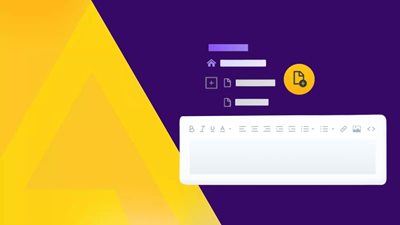An Intro to Content Modeling


We believe that Editor Experience is critical for the success of any Content Platform implementation. How you define, relate, and create content drives this success.
What is Content Modeling?
Content modeling is the process of taking the data and ideas important to your organization and giving them some shape. Often this is about defining how the content you want to make available digitally, usually on your website and apps, will be stored and edited in your Content Platform.
Agility's unique content-modeling approach enables a robust and consistent way to define and relate your content with endless possibilities.
Where Agility's best-in-class Editor Experience differentiates itself from other systems is the ability to define and relate content with our built-in Page Management. This means you can specify the content, then control exactly how that content gets used and on which page.
The Content Model section in Agility is where you can manage your Content Definitions, what UI elements editors can add to a page (Module Definitions), and what areas on the page the editor can manage (Page Templates).
How to Get Started with Content Modeling in Agility
Start with a Brainstorming Session
The first thing I like to do when starting out with a new content model is to get all the ideas written down about what kinds of content are in the organization and the attributes of that content. I recommend finding the people in your organization who are already knowledgeable about this data and involving them in the brainstorming sessions.
Look at the kinds of content that are important to you. Do you publish articles or announcements? Do you list staff or other bios on your website? Do you advertise, promote and sell products? Write all these things down. It's good to know ahead of time where you will want this content to appear on your website or in an app, but keep in mind that if you do it right, your content can be used in multiple places if needed.
Define the Fields for each Model
Now that you have the types of content (each one can be considered a "Model" in Agility), you should decide what fields should be in each one.
Fields, or properties, allow you to split up the attributes of each item of content with its respective properties and data types.
For instance, an Employee or Author Bio content model would have a Name, Job Title, Headshot, and a Bio field. A News Article could have a Heading, Image, Publish Date, Author, and the content text itself.

Define the Data Type for each Field
Not all fields are text (called "strings" in the data world). You would store publish date as an actual date type, and you can decide if you want to include the time portion of that as a date/time. Other options for basic data types are:
- Text or Long Text
- Numbers (with and without a decimal)
- Dates (with and without time)
- URLs or Links
- Boolean (true/false)
- Image Attachment
- File Attachment
Linked Content
We can also get fancy with our fields and have dropdown lists (to select a single value) and checkbox lists (to select multiple values). A cool control called a search list box allows you to search through a list, select multiple values, and reorder those selections. Each field type enables you to choose values from another list in Agility. We will dive deeper into this with another article.
Rich Text
One of the most powerful field types is a Rich Text field, which allows you to store HTML. This data type empowers your editors to create a WYSIWYG (what you see is what you get) output for things like articles and blog posts. What's not so great is that your editors might not be comfortable with that level of control. We've introduced a Block Editor custom field type to some of our customers, which provides most of the benefits of Rich Text while still constraining the output to match your design system.
Once you've created your Content Model's field, you can create an actual container (a List or a single Item) for that content. You can reuse Content Models in Agility as much as you need to.
Your editing team will now be able to create new items on your list.
That should give you a basic understanding of how Content modeling works in Agility. Keep following along to learn more about linked content, external content relationships, workflow, and security.

About the Author
Joel is CTO at Agility. His first job, though, is as a father to 2 amazing humans.
Joining Agility in 2005, he has over 20 years of experience in software development and product management. He embraced cloud technology as a groundbreaking concept over a decade ago, and he continues to help customers adopt new technology with hybrid frameworks and the Jamstack. He holds a degree from The University of Guelph in English and Computer Science. He's led Agility CMS to many awards and accolades during his tenure such as being named the Best Cloud CMS by CMS Critic, as a leader on G2.com for Headless CMS, and a leader in Customer Experience on Gartner Peer Insights.
As CTO, Joel oversees the Product team, as well as working closely with the Growth and Customer Success teams. When he's not kicking butt with Agility, Joel coaches high-school football and directs musical theatre. Learn more about Joel HERE.



